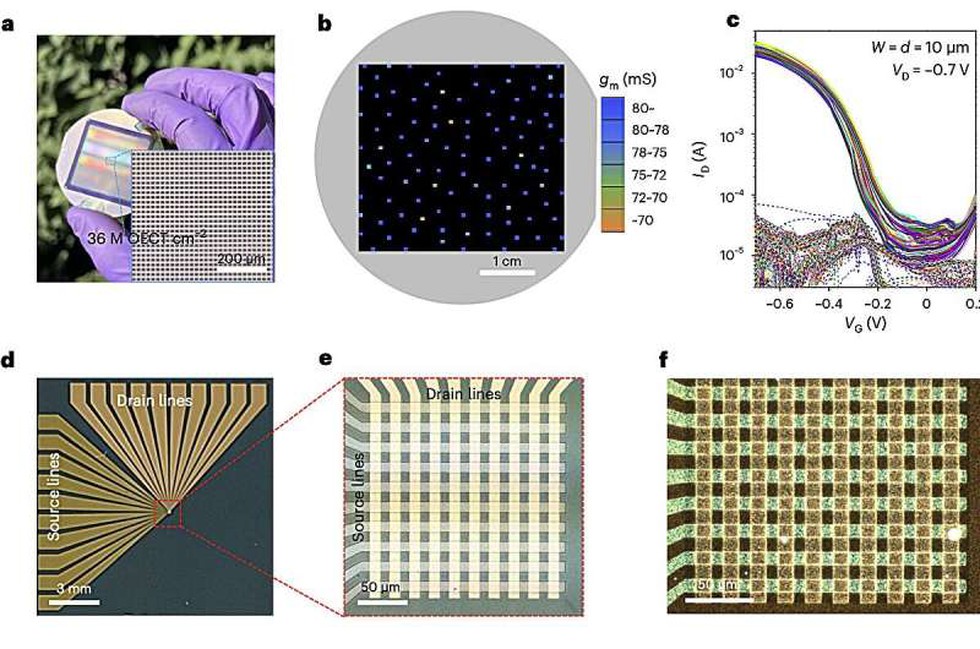A team of researchers has introduced a pioneering strategy for crafting high-density vertical organic electrochemical transistor (OECT) arrays, aiming to revolutionize electronics and its applications.
Challenges in Traditional Fabrication
Traditionally, fabricating OECT arrays with high density has been challenging due to limitations in conventional fabrication processes.
Novel Fabrication Method
The study details a novel fabrication method that overcomes these hurdles by utilizing innovative techniques to arrange transistors in a vertical orientation, boosting density and performance.
Implications of the Breakthrough
The ability to pack a larger number of transistors into a smaller space can make electronic devices more compact, energy-efficient, and powerful. This breakthrough holds particular promise for fields such as biomedical engineering, enabling the development of advanced medical implants and diagnostic devices. Enhanced performance opens doors for applications in wearable technology, flexible displays, and sensor networks.
Vision for the Future
Researchers envision a future where electronics seamlessly integrate into various aspects of daily life, offering unprecedented levels of functionality and convenience.
Dr. Sarah Chen’s Perspective
Lead author Dr. Sarah Chen expresses enthusiasm about the potential impact of their work, describing it as a significant step forward in the development of high-density OECT arrays.
Potential Transformative Innovations
The breakthrough could pave the way for transformative innovations that reshape the landscape of technology and its applications.
Multiple Choice Questions (MCQs) with Answers:
- What is the focus of the research discussed in the article?
- A) Developing new software algorithms
- B) Crafting high-density vertical Organic Electrochemical Transistor (OECT) arrays
- C) Studying historical electronic devices
- D) Exploring new materials for construction
- What has been a traditional challenge in fabricating OECT arrays with high density?
- A) Lack of skilled researchers
- B) Limitations in conventional fabrication processes
- C) Excessive funding requirements
- D) Unavailability of suitable materials
- How does the novel fabrication method overcome traditional hurdles?
- A) By reducing transistor density
- B) By utilizing outdated techniques
- C) By arranging transistors in a vertical orientation
- D) By increasing the size of electronic devices
- What potential benefits does the breakthrough offer for electronic devices?
- A) Decreased energy efficiency
- B) Reduced compactness
- C) Increased power consumption
- D) More compact, energy-efficient, and powerful devices
- In which field does the breakthrough hold particular promise?
- A) Agriculture
- B) Fashion design
- C) Biomedical engineering
- D) Mechanical engineering
